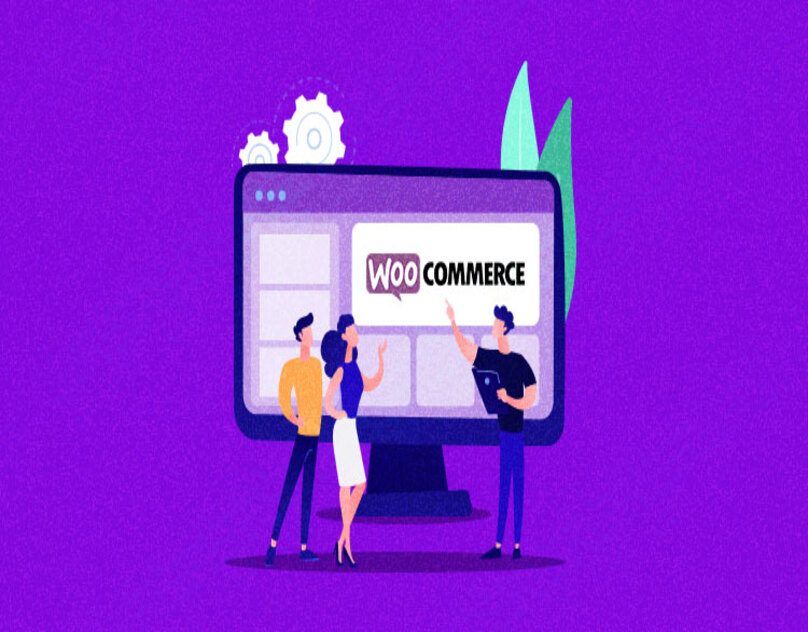Because of its adaptability and extensive feature set. WooCommerce has become one of the most widely used e-commerce platforms, particularly among WordPress users. Nevertheless, just like with any other e-commerce solution, optimizing your WooCommerce store. For search engines is essential if you want to increase sales and drive organic traffic to your website. Unfortunately, a large number of store owners fall into frequent SEO traps, which can hurt the performance of their websites. The purpose of this post is to bring attention to the most prevalent WooCommerce SEO mistakes and to offer suggestions on how to avoid making them again.
1. Ignoring Instructions for the Product Description
In WooCommerce stores, failing to develop product descriptions that are both unique. Thorough is one of the major SEO blunders that business owners can make. In the belief that the product would sell itself, many proprietors of retail establishments. Either use the description provided by the manufacturer or supply only a limited amount of information. The content, on the other hand, is what search engines utilize to determine what your product is. And how relevant it is to the query that a user has entered.
Fix: Create Exclusive Descriptions That Are Packed with Keywords
- Research Keywords: Use tools like Google Keyword Planner, Ahrefs, or SEMrush to identify keywords related to your products. It is important to incorporate these keywords naturally into your product descriptions.
- Emphasis on Benefits: Instead of simply describing the features of the product. You should describe how the buyer would benefit from using it. Your search engine optimization (SEO) will increase as a result of this. And potential customers will find your goods more desirable.
- Avoid Duplicate Content: If you sell products that are comparable to one another. You should resist the desire to copy and paste information about them. To avoid being punished for duplicate content, each product ought to have a unique description.
2. Overlooking Product Titles
The titles of your products are the first thing that users and search engines have the opportunity to see. You are passing up a fantastic opportunity to generate organic visitors if they are not properly optimized or if they are generic.
Fix: Optimize Product Titles for Search Engine Optimization
- Contain Primary Keywords: Make sure that your primary keyword is included in the title of the product. Preferably starting near the beginning of the title.
- Be Descriptive but Concise: Your title should accurately describe the product without being too lengthy. Aim to keep it inside fifty to sixty characters so that it does not get cut off in the results of search engines.
- Consider the Intent of the Search: When you are thinking about what your potential consumers could be looking for. You should adjust your titles to match the queries that they might be using.
3. Neglecting Image Optimization
When it comes to e-commerce, images are extremely important since they ensure that customers have a clear visual idea of the goods. They can, however, slow down your website and have a detrimental impact on your search engine optimization if they are not properly adjusted.
Fix: Optimize Images for Search Engine Optimization
- Use Descriptive Alt Text: Alt text helps search engines understand what an image is about. While providing an accurate description of the image, be sure to include relevant keywords.
- Compress Images: Large image files can slow down your website, leading to higher bounce rates and lower rankings. To compress photos without compromising their quality, you can make use of tools such as TinyPNG or WP Smush.
- Choose the Right File Name: Instead of generic names like “IMG_1234.jpg,” use descriptive filenames that include keywords, such as “red-leather-sofa.jpg.”
4. Ignoring WooCommerce Structured Data
Search engines can better understand your content with the assistance of structured data, which can also considerably improve how your items are displayed in search results, such as through rich snippets’ implementation.
Correctly implementing structured data is a resolvable issue.
- Utilize a Plugin: If you do not feel comfortable manually inputting structured data, you should make use of a plugin such as Yoast SEO or Schema Pro. The WooCommerce products you sell will have structured data added to them automatically by these technologies.
- Test Your Structured Data: Use Google’s Rich Results Test tool to ensure your structured data is implemented correctly and troubleshoot any errors.
5. Failing to achieve optimal performance on category pages
When it comes to WooCommerce store owners, the majority of them concentrate primarily on product pages while ignoring to optimize category pages. However, category pages frequently score well for more general search queries and have the potential to generate a large amount of traffic.
Improve the search engine optimization of category pages.
- Write distinctive Category Descriptions: In a manner analogous to product descriptions, the content of your category pages ought to be distinctive and should use pertinent keywords. In this way, search engines are better able to comprehend the primary aim of each category.
- Optimize Meta Titles and Descriptions: Ensure that each category page has a unique meta title and description that includes your target keywords. In addition to assisting with search engine optimization, this also helps to enhance click-through rates from search engine results.
- Internal Linking: Use your category pages to create a logical internal linking structure that guides users (and search engines) to related products and categories.
6. The site’s structure and navigation are both really poor.
The user experience and search engine optimization (SEO) can both suffer when a website’s structure is cluttered or unclear. If it is difficult for search engines to crawl your website, your rankings will suffer as a result.
Fix: Improve the Site’s Navigation and Structure
- Create a Clear Hierarchy: Ensure that your website has a logical structure with a clear hierarchy. It should not be difficult to navigate between the categories, subcategories, and products.
- Links: Make sure that your WooCommerce website is enabled to display breadcrumbs. By doing so, they enhance navigation and make it easier for search engines to comprehend the structure of your website.
- Sitemap: Generate and submit a sitemap to Google Search Console. Search engines will crawl and index your website more efficiently as a result of this strategy.
7. Ignoring Mobile Optimization
A mobile-friendly WooCommerce website is essential for search engine optimization (SEO) because the majority of visitors browse websites through their mobile devices. Additionally, Google employs a mobile-first indexing strategy, which means that the mobile version of your website is regarded as the primary version for ranking.
Fix: Make sure that your WooCommerce website is compatible with mobile devices
- Responsive Design: Make use of a WordPress theme that is specifically designed to automatically adapt the layout of your website to accommodate a variety of screen sizes.
- Test the Mobile Usability: Make use of Google’s Mobile-Friendly Test tool to locate and resolve any problems that may arise with mobile usability.
- Optimize Checkout for Mobile: Make sure that the process of checking out on mobile devices looks and feels completely natural. Checkouts that are difficult to use or take a long time can cause customers to abandon their shopping carts, which can have a negative influence on your search engine optimization.
8. Slow Page Load Times
When it comes to ranking, Google’s algorithm places a big emphasis on page speed. If your WooCommerce website is slow, it may result in greater bounce rates and poorer conversion rates, both of which are detrimental to your search engine optimization.
Fix: Improve Page Speed
- Use a Fast Hosting Provider: Choose a hosting provider that offers the Best WooCommerce SEO Services to optimize WooCommerce hosting solutions.
- Implement Caching: Use a caching plugin like W3 Total Cache or WP Rocket to reduce page load times by serving static versions of your pages.
- Minimize Plugins: Only use necessary plugins, as too many can slow down your site. Regularly, conduct an audit of your plugins and deactivate or delete any that are not necessary.
9. Not Utilizing Customer Reviews
Not only are customer reviews beneficial for establishing trust, but they are also useful for search engine optimization. Reviews offer new material, which frequently include keywords, and have the potential to increase click-through rates from search engine results and other sources.
Fix: Encourage and Optimize Customer Reviews
- Request Reviews: After purchase, follow up with customers to request reviews. Through the use of plugins such as WooCommerce Follow-Ups, you can have this process automated.
- Display Reviews Prominently: Make sure that reviews are easily accessible on your product pages. The implementation of the review schema in the correct manner allows for the positive reviews to be featured in search results as well.
- Respond to Reviews: Enhancing customer satisfaction and maybe contributing to improved rankings can be accomplished by engaging with customers through the process of responding to reviews, whether they are favorable or negative.
10. Not Monitoring SEO Performance
Last but not least, one of the most typical errors is failing to monitor and change your search engine optimization plan. Search engine optimization is not a one-time activity but rather an ongoing process.
Fix: Make sure to monitor and adjust your SEO strategy regularly *
- Utilize Google Analytics and Search Console to your advantage: The insights that these tools provide about the performance of your website. And the areas in which changes may be made are quite helpful.
- Regular Search Engine Optimization Audits: It is important to do regular SEO audits utilizing tools such as Ahrefs, Moz, or Screaming Frog. To discover and resolve any issues that may be harming your rankings.
- Remain Current with the Most Effective SEO Practices: There is a continuous evolution of SEO. To guarantee that your WooCommerce website continues to be competitive. It is important to stay current with the most recent trends and algorithm modifications.
Conclusion
It is crucial to optimize your WooCommerce store for search engines to increase sales and drive organic traffic to your site. You will be able to dramatically increase the visibility and performance of your website in search engine results. If you avoid making these typical WooCommerce SEO blunders and execute the changes that are provided. It is important to keep in mind that search engine optimization (SEO) is an ongoing process. It is essential to regularly update and refine your approach to maintain and improve your rankings over time.


